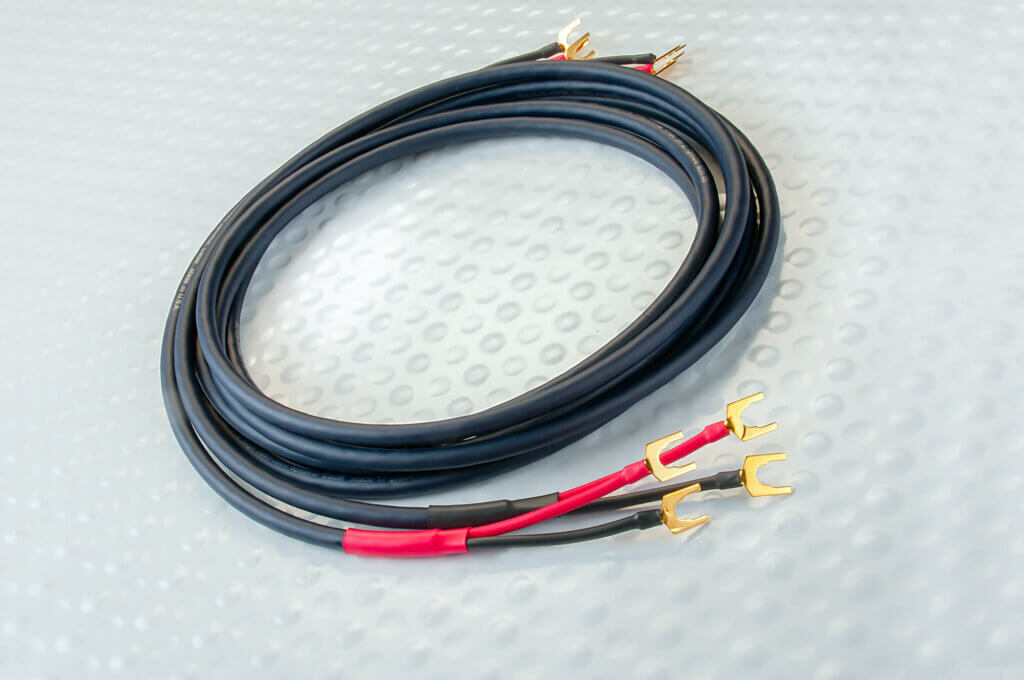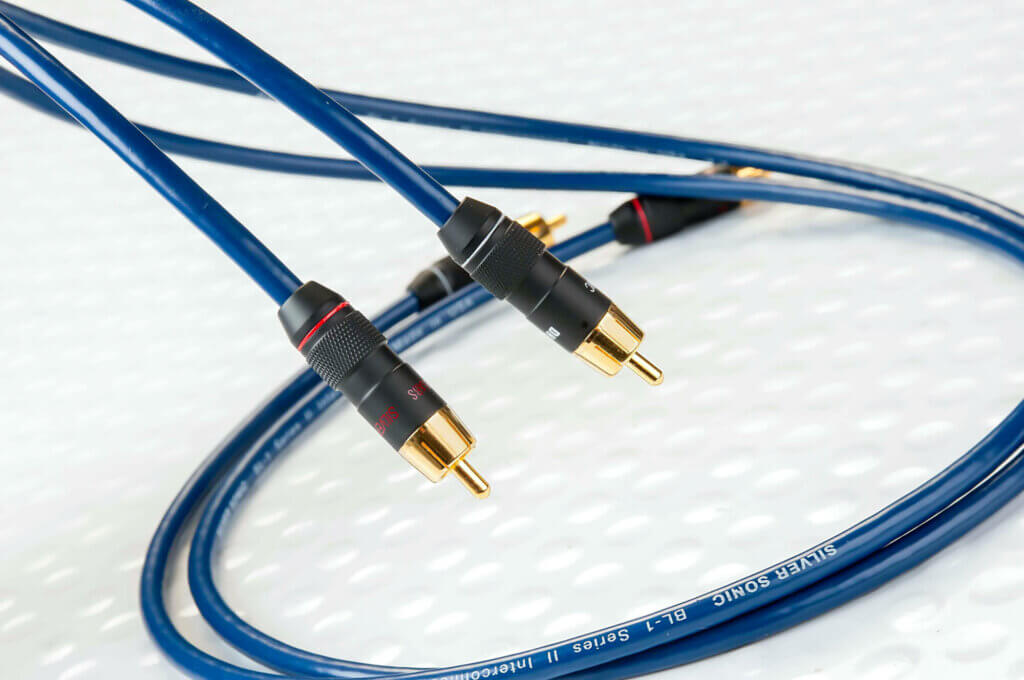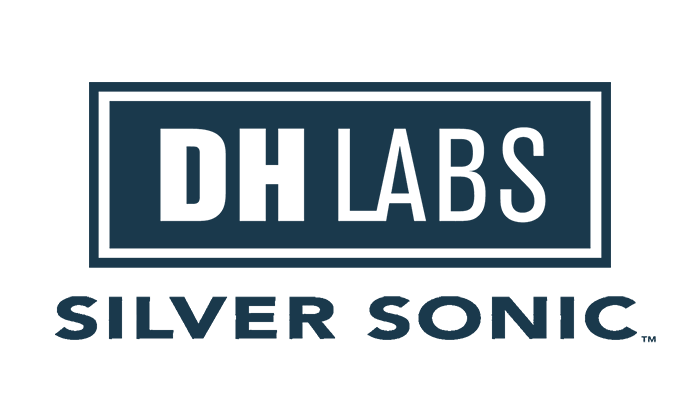Sign up to be the first to know about our new products and special promotions.

SPEAKER BUILDER
D.H. LABS SILVER SONIC AUDIO CABLES
By Gary Galo Contributing Editor
D.H. Labs is a newcomer to the audio cable scene, and its first products are sure to attract attention among those who believe that cables make a difference. High-end audio designers generally agree that Teflon is the best solid dielectric material. Measurements introduced nearly fifteen years ago have shown the superiority of Teflon in critical performance areas, including dissipation factor and dielectric absorption (among other things, audio cables are capacitors). D.H. Labs has recently introduced its new “Silver Sonic” cable line, including the T-14 loudspeaker cable and BL-1 interconnect.

The T-14 consists of two 14AWG conductors with pure DuPont Teflon TFE insulation. TFE is the highest grade of Teflon available. The stranded conductors are made of oxygen-free copper, and each is individually coated with silver. Silver is a superb conductor – but it oxidizes easily. To prevent this, the T-14s’s conductors are tightly sealed with the Teflon insulation.
The insulated conductors are spiraled for low inductance, yet capacitance is also low – around 22pF/ft. These cables should mate well with most amplifier/loudspeaker combinations. The center conductors are wound with a vibration-damping filler and tightly covered with a tension wrap and heavy outer jacket, making the cable virtually immune to resonances and microphonics.

The BL-1 is a fully balanced interconnect cable consisting of two insulated center conductors, plus a foil shield and a separate drain wire. The conductors are made from slow-drawn, oxygen-free copper. Each of the fine strands is individually plated with silver. The dielectric is a new Teflon copolymer. D.H. Labs’ president, Darren Hovsepian, claims the new copolymer has nearly identical electrical characteristics as the pure Teflon TFE used in the T-14 loudspeaker cable.
The copolymer requires less heat in the extrusion process, however, which is advantageous when manufacturing a finely stranded cable. The overall gauge of the conductors and drain wire is 20AWG, heavier than many interconnects. The BL-1 contains vibration-damping fillers similar to those used in the T-14 speaker cable. The outer jacket is extruded under pressure, further reducing the possibility of resonances and microphonics.
I evaluated the T-14 and BL-1 cables with my biamped Audio Concepts Sapphire IIti/Sub 1 loudspeaker system, fed with a pair of Adcom GFA-585 power amps (the Sapphire IIti’s amp is modified) and an extensively modified Adcom GFP-565 preamp. The Sapphire IIti satellites are biwire (detailed in “Bi-Amping the Sapphire II Sub-I System,” SB 3/92, p. 24). I fitted the T-14 loudspeaker cables with gold-plated Old Colony’s fork lugs. I use Canare F-10 RCA connectors with the BL-1 cables.
I had several weeks to evaluate the T-14 speaker cable before the BL-1 interconnect arrived. My existing speaker cables were AudioQuest Indigo Blue; my interconnects were made from Grado Signature Laboratory Standard Audio Cable (no longer available in bulk form). Both of the D.H. Labs “Silver Sonic” cables made a significant improvement in my system. I was enormously impressed with the increase in detail and resolution.
Soundstage reproduction is also superior to my previous cables, being larger than I’m accustomed to. The D.H. Labs cables are extremely smooth and extended in the high frequencies, with plenty of the elusive air and space, yet free of any harshness. I have found them to be extremely musical over the long haul (I’ve used the BL-1 interconnects for several weeks, and the T-14 speaker cables for over two months).
If the BL-1 is used in an unbalanced application (e.g., most home installations), the shield should float at one end. On the source end, connect both the black center conductor and the drain wire to the shield of the RCA connector. On the load end, leave the drain wire unconnected. In this configuration, the BL-1 has a capacitance of about 44pF/ft. I recommend using a small piece of heat shrink tubing to make sure the drain wire remains insulated on the load end of the cable. The arrows printed on the cable should point toward the load. The cable isn’t manufactured with directional characteristics, but the arrows provide an easy means of identifying the load end once the cable has been fitted with RCA connectors.
You’ll also need to purchase terminations for the T-14 speaker cables. The gold-plated fork lugs sold by Old Colony work well (cat. #SCFFF, $2.95/pair). D.H. Labs offers four different gold-plated terminators at a very reasonable cost. The SP-1 spade connector will accept 10AWG wire; cost is $2.20/pair. The SP-2 spade connecgtor will accept up to 8AWG wire; cost is $4.50/pair. D.H. Labs also offers the B-1C banana connectors and P-1 pin connectors, at $5.50 and $3.00/pair, respectively. Recently I evaluated the Kimber Kable KCAG interconnects and 4AG speaker cables. These cables are made with Kimber’s proprietary Silver Varistrand conductors and Teflon insulation. The interconnects are terminated with Kimber’s RCA-M plugs, and the speaker cables with Postmasters. The KCAG interconnect cables cost $350/meter pair. The 4AG speaker cables are $100/foot. While I found the Kimber Kables slightly better than the D.H. Labs cables in most areas of performance, it’s clear that the law of diminishing returns is at work.
A 1m pair of D.H. Labs BL-1 cables fitted with Canare F-10 connectors will cost around $30 [if you assemble them yourself]. The same length of Kimber KCAG with Kimber RCA-M plugs will cost nearly 12 times that amount. I think few listeners would say they were 12 times as good. Kimber’s 4AG speaker cables are nearly 30 times the cost of the D.H. Labs T-14, if the T-14 is fitted with one of D.H. Labs gold-plated terminations. Again, the Kimber Kables are excellent, but, in my view, nothing like 30 times as good as the D.H. Labs cable. D.H. Labs offers unprecedented value, with excellent performance even when compared to cables selling for many times the price.
The D.H. Labs cables are easy to work with. The BL-1 interconnect is flexible enough to warrant serious consideration for internal wiring in preamps, electronic crossovers, and other low-level circuitry. The use of a drain wire/foil shield combination makes the shield connection easy. D.H. Labs is expanding its dealer network, so ask for the name of a dealer near you. D.H. Labs have brought the cost of high-quality Teflon-based cables and connectors within reach of any serious audiophile. These products are highly recommended.
MANUFACTURER RESPONSE
I would like to thank SB and Gary Galo for reviewing our Silver Sonic audio cables. Our goal for the Silver Sonic line is to offer high-end performance at affordable prices, and we are very pleased that Gary was impressed with the performance and value of the cables.
One point that I believe would be of special interest to speaker builders is that the conductors in our speaker cable and interconnect are tightly sealed in the Teflon insulation and will not oxidize over time. This is especially important for the wiring inside speaker enclosures, which cannot be easily replaced.
Darren Hovsepian
D.H. Labs

